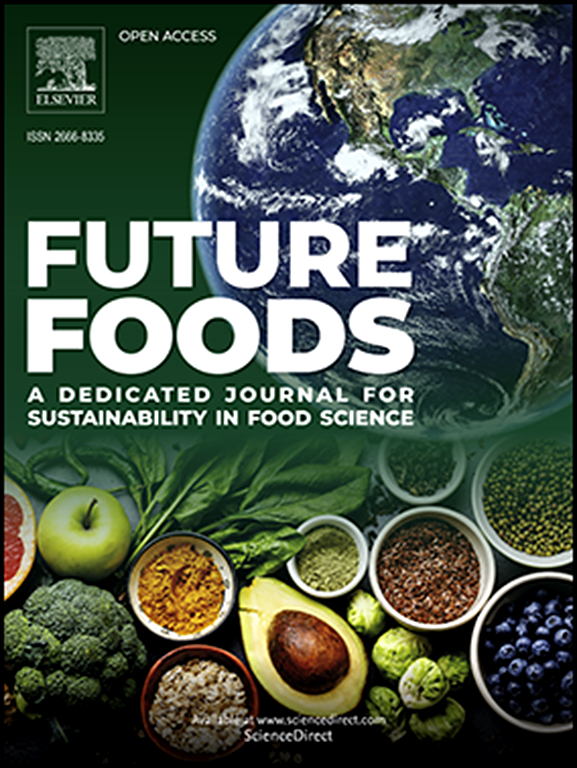Monitoring food spoilage using smart plant-based packaging materials: Methylcellulose/soy protein films loaded with betacyanin and carbon dots
IF 7.2
Q1 FOOD SCIENCE & TECHNOLOGY
引用次数: 0
Abstract
In this study, novel plant-based smart packaging materials were developed by loading betacyanin (MJ-Bs) and carbon dots (MJ-CDs) isolated from Mirabilis jalapa petals into biofilms fabricated from soy protein isolate (SPI) and methyl cellulose (MC). The MJ-Bs and MJ-CDs were used as natural color indicators and antimicrobials. Based on scanning electron microscopy analysis, these films had smooth surfaces and uniform structures. Incorporating the MJ-CDs and MJBs into the biofilms increased their UV-blocking properties (from 96.8 to 99.9 %), wettability (from 49.1 to 76.3 °), and tensile strength (from 29.3 to 36.3 MPa), and reduced their water vapor permeability (from 2.91 to 2.13 × 10–11 g. m/m2. s. Pa). The color of the MJ-CD/MJB-loaded biofilms exhibited strong sensitivity to changes in pH (2 to 12), as well as to changes in ammonia vapor levels. The potential application of the biofilms was assessed by measuring their ability to monitor and preserve shrimp freshness during storage at 25 °C. The color of the biofilms shifted from pink (fresh) to brownish yellow (spoiled) during storage, indicating their efficacy for this purpose. These findings highlight the potential of these novel biofilms for quality evaluation in protein-rich fresh food products, offering significant implications for food safety, shelf-life extension, and sustainability in the packaging industry.

求助全文
约1分钟内获得全文
求助全文
来源期刊

Future Foods
Agricultural and Biological Sciences-Food Science
CiteScore
8.60
自引率
0.00%
发文量
97
审稿时长
15 weeks
期刊介绍:
Future Foods is a specialized journal that is dedicated to tackling the challenges posed by climate change and the need for sustainability in the realm of food production. The journal recognizes the imperative to transform current food manufacturing and consumption practices to meet the dietary needs of a burgeoning global population while simultaneously curbing environmental degradation.
The mission of Future Foods is to disseminate research that aligns with the goal of fostering the development of innovative technologies and alternative food sources to establish more sustainable food systems. The journal is committed to publishing high-quality, peer-reviewed articles that contribute to the advancement of sustainable food practices.
Abstracting and indexing:
Scopus
Directory of Open Access Journals (DOAJ)
Emerging Sources Citation Index (ESCI)
SCImago Journal Rank (SJR)
SNIP
 求助内容:
求助内容: 应助结果提醒方式:
应助结果提醒方式:


